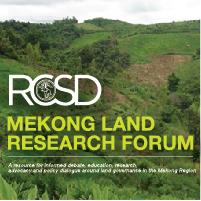Resource information
ABSTRACTED FROM THE OPENING PARAGRAPHS, AND THE BOOK BLURB: The decentralization of control over the vast forests of the world is moving at a rapid pace, with both positive and negative ramifications for people and forests themselves. Th[is] chapter examines LFA from the decentralized forest management perspective. In particular, it examines the process by which the policy was implemented and considers whether it helped build sustainable forest management at the community level. [It] first reviews the history of LFA and the major actors involved. Second, it examines two types of allocation processes. One is undertaken by district authorities with funds from the provincial government; the other is supported by an international donor. The comparison highlights underlying problems of LFA in practice, particularly its constraints in building forest management institutions that attain the dual goals of incorporating local people’s needs and protecting the environment. District authorities such as the District Agriculture and Forestry Office (DAFO), placed at the centre of LFA, are often ill equipped to pursue challenging goals because of their limited financial and human resources. The weakness of the institutional foundation means that violations cannot be prosecuted by law but instead are resolved through social and political relationships among the stakeholders. Through review of the allocation process, this chapter shows how the policy has placed local authorities, such as DAFO and village organizations, at the centre of forest management. The weak institutional capacity of DAFO to adapt resource management plans to local conditions and monitor their impacts, as well as the still-new notion of resource tenure among the members of local communities, inhibits LFA as a means of community-based resource management.



